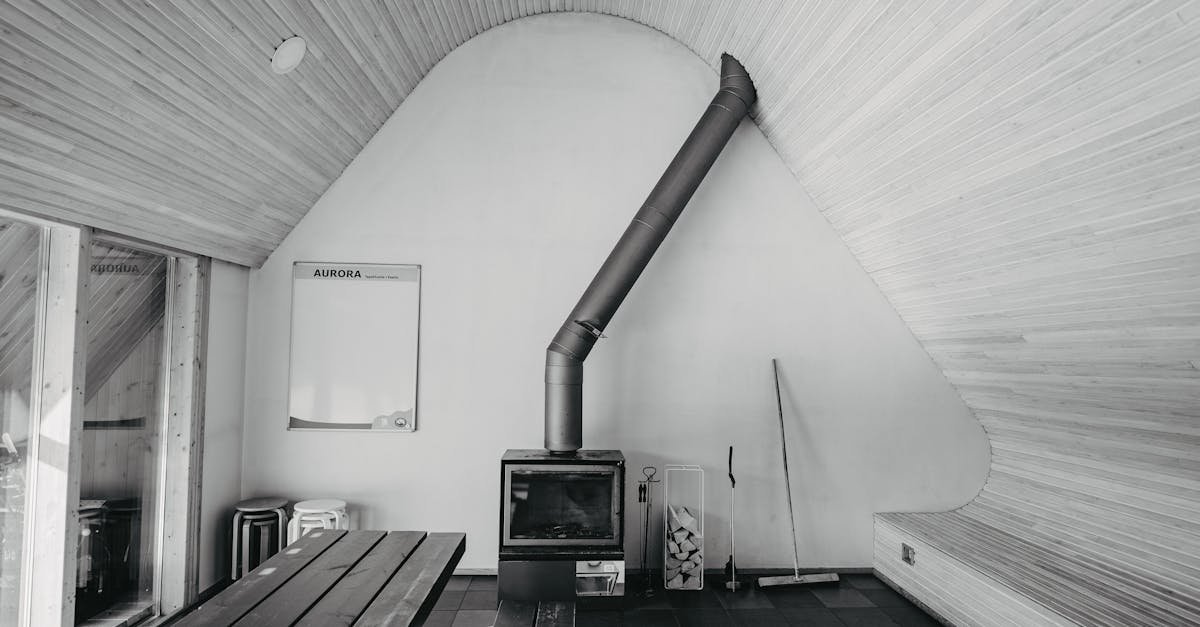For optimal heating, place baseboard heaters under windows or along exterior walls. This positioning helps counteract cold drafts and ensures even warmth throughout the room.
When you’re considering room placement, think about the layout and furniture arrangement. Avoid blocking the heaters with large furniture to maximize heat distribution. Proper placement not only enhances comfort but also boosts energy efficiency, making your space cozy and inviting.
Understanding Baseboard Heater Room Placement
Baseboard heater placement significantly affects room warmth and comfort. Installing heaters under windows is a common practice. Doing so counters cold air that descends from the glass. The heater warms the cold air, preventing drafts and reducing heat loss through the window. This placement also contributes to a balanced indoor temperature.
Heaters near windows help reduce condensation on the glass. When the air is warm, it limits moisture buildup, which can lead to mold issues. A dry environment promotes healthy living spaces.
Consider the heat transfer and convection principles when placing baseboard heaters. They warm the air near the floor. As the air rises, it pulls cooler air towards the heater. This cycle evenly distributes heat throughout the room.
Room layout plays a crucial role in heater effectiveness. Avoid placing large furniture in front of heaters. Blocked heaters struggle to distribute heat, which leads to uneven warmth. Ensure clear pathways for airflow, enhancing comfort and energy efficiency.
Selecting proper placement and factoring in the room’s design creates a cozy environment. By following these guidelines, you’ll ensure your baseboard heaters deliver optimal performance while maintaining a comfortable atmosphere.
Benefits of Proper Heater Placement
Proper baseboard heater placement enhances your home’s heating efficiency and comfort. When you position heaters correctly, you’ll experience better warmth and reduced energy costs.
Increased Heating Efficiency
Increased heating efficiency comes from smart placement. Under Windows: Placing heaters under windows is key. This location warms the cold air settling near the floor due to the chilled window. As a result, it reduces heat loss. This placement also helps control condensation and mold formation on windows, which are often the coldest spots in a room.
Airflow and Convection: Heaters thrive on natural convection. Place them near the floor to effectively heat the cooler air that settles there. Warm air rises, promoting better air distribution throughout the room. This technique maximizes the heater’s potential.
Clearance and Obstructions: Ensure adequate clearance around heaters. Remove any obstructions like furniture or curtains. Blocked heaters can’t distribute heat effectively, leading to cold spots in your room. Keeping the area clear allows for optimal airflow, enhancing heating efficiency.
Improved Comfort Levels
Improved comfort levels stem from how you arrange your space. Warm Air Distribution: When heaters are positioned correctly, warm air circulates evenly. You experience fewer drafts and a consistent temperature throughout the room.
Reduced Cold Spots: Proper placement prevents cold spots in your home. Cold drafts from windows or walls get managed effectively, making the environment cozy. You’ll notice a significant difference in comfort and warmth.
Healthier Environment: Maintaining a comfortable temperature helps create a healthier living space. Consistent warmth limits humidity build-up, which can lead to mold issues. This results in better air quality for you and your family.
By implementing these smart placement strategies, you enhance both heating efficiency and comfort in your home.
Key Considerations for Placement
Effective baseboard heater placement relies on several important factors. Understanding these factors improves heating efficiency and comfort.
Room Size and Shape
Room size influences the heater’s effectiveness. Electric baseboard heaters generally range from 300 watts to 2000 watts. This power typically heats spaces between 50 and 200 square feet. Larger rooms often require multiple heaters to ensure even warmth. Smaller rooms usually suffice with one heater. Consider the layout when calculating heater placement. Use heat loss calculations to determine the optimal heater size.
Furniture Arrangement
Furniture arrangement directly affects airflow. Always keep the area in front of baseboard heaters clear. Blocked heaters can’t distribute heat properly. This obstruction may lead to uneven warmth and reduced efficiency. Ensure that furniture does not crowd the heaters. Aim for at least 12 inches of clearance to maximize heat transfer and convection.
Window and Door Locations
Positioning heaters near windows and doors is key for optimal performance. Cold drafts enter through these openings. Placing heaters under windows helps counteract this chill. This design warms air descending from glass surfaces. It also reduces condensation, enhancing indoor air quality. Ensure heaters are situated where they can effectively combat drafts while maintaining a safe distance from doors to prevent obstruction.
Common Placement Mistakes
When placing baseboard heaters, you may encounter common mistakes that hinder their effectiveness. Understanding these can enhance the heater’s performance and safety.
Ignoring Clearances
Ignoring clearances can lead to serious issues. Baseboard heaters require adequate space for airflow. Placing furniture, drapes, or other flammable materials too close restricts this airflow. It increases the risk of overheating and fire hazards. Maintain at least 12 inches of clearance in front of the heaters. This ensures airflow remains unobstructed. Proper clearance promotes efficiency and safety.
Overcrowding with Furniture
Overcrowding with furniture is another common mistake. Avoid positioning furniture directly in front of baseboard heaters. This placement blocks airflow and reduces heating efficiency. Baseboard heaters rely on convection; warm air rises and pulls in cooler air. Obstructions hinder this process. Keep the area in front of the heaters clear. This practice ensures optimal heat distribution throughout the room.
Conclusion
Proper placement of baseboard heaters is essential for maximizing comfort and efficiency in your home. By strategically positioning heaters under windows and along exterior walls you can effectively combat cold drafts and promote even warmth throughout the room.
Remember to keep the area in front of heaters clear to ensure optimal airflow and prevent common mistakes that can hinder performance. With thoughtful arrangement and attention to clearances you can create a cozy environment while also reducing energy costs.
Implementing these strategies will not only enhance your heating experience but also contribute to a healthier living space free from excess moisture and cold spots.








